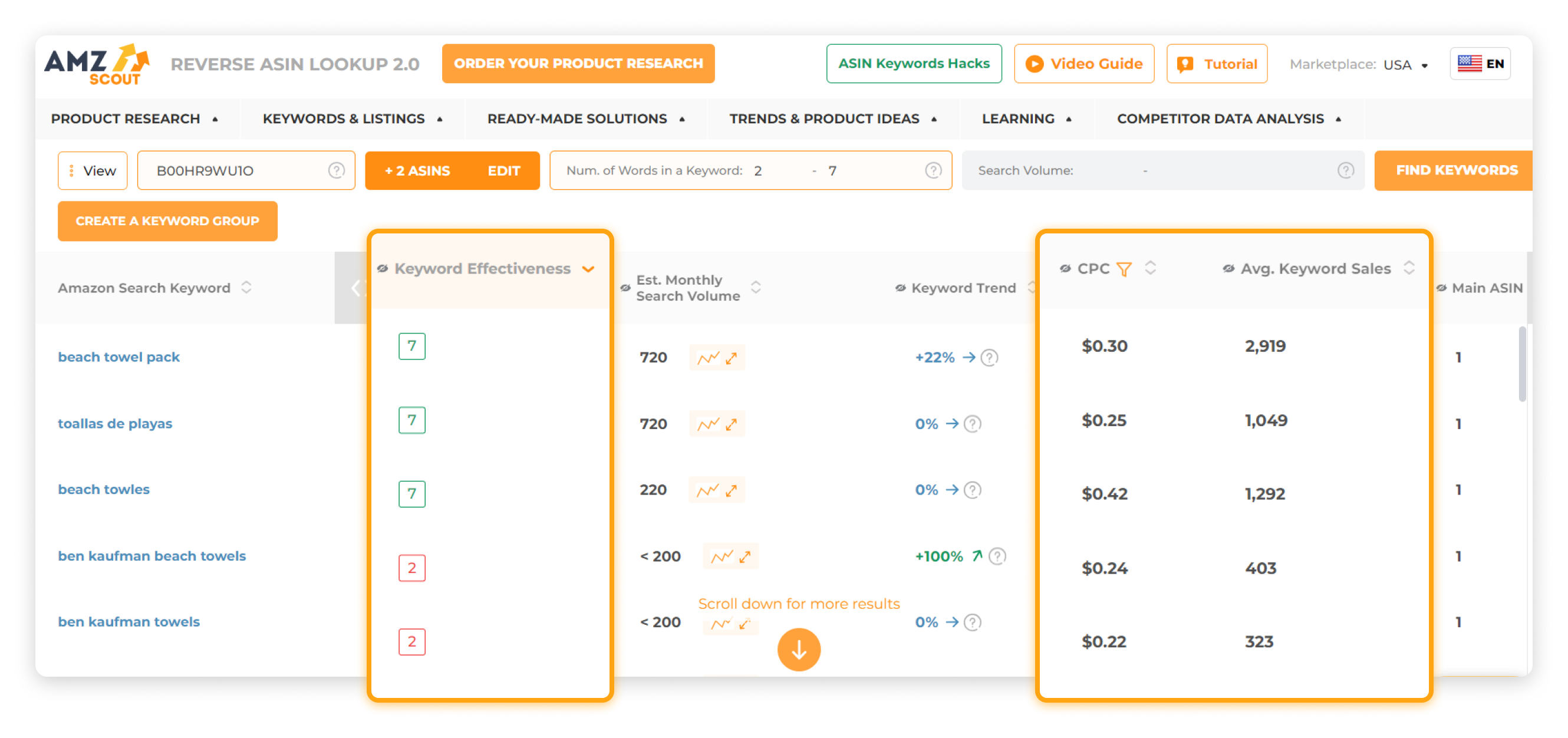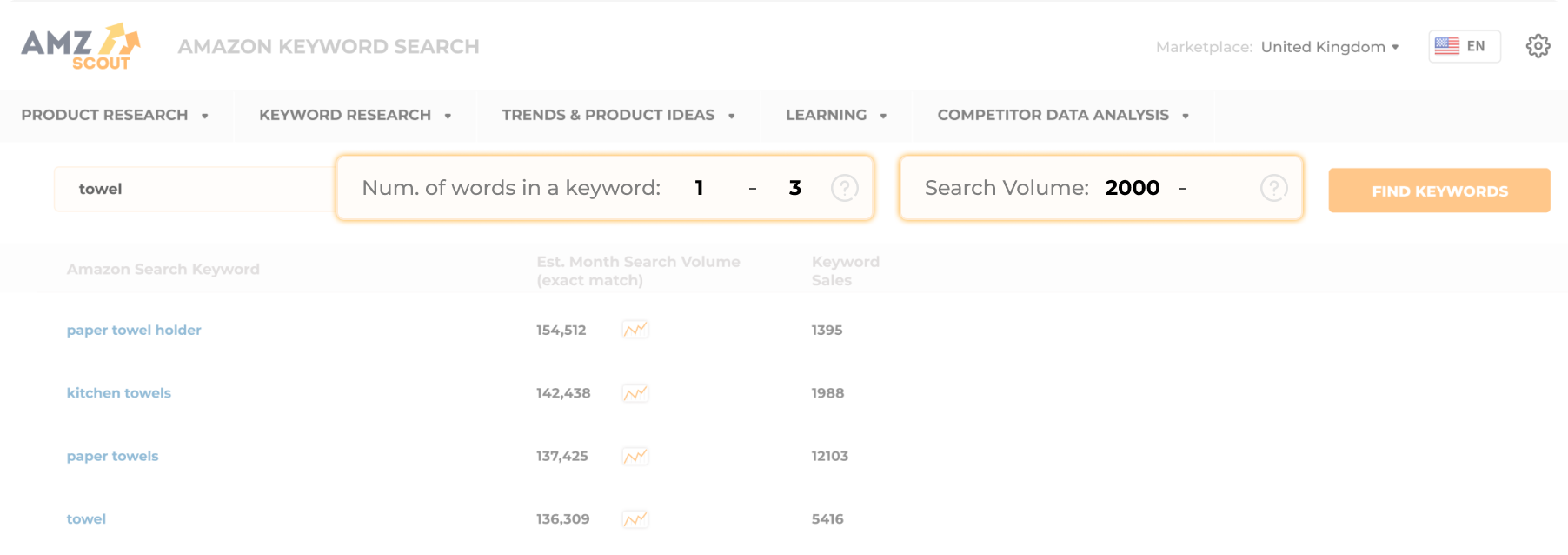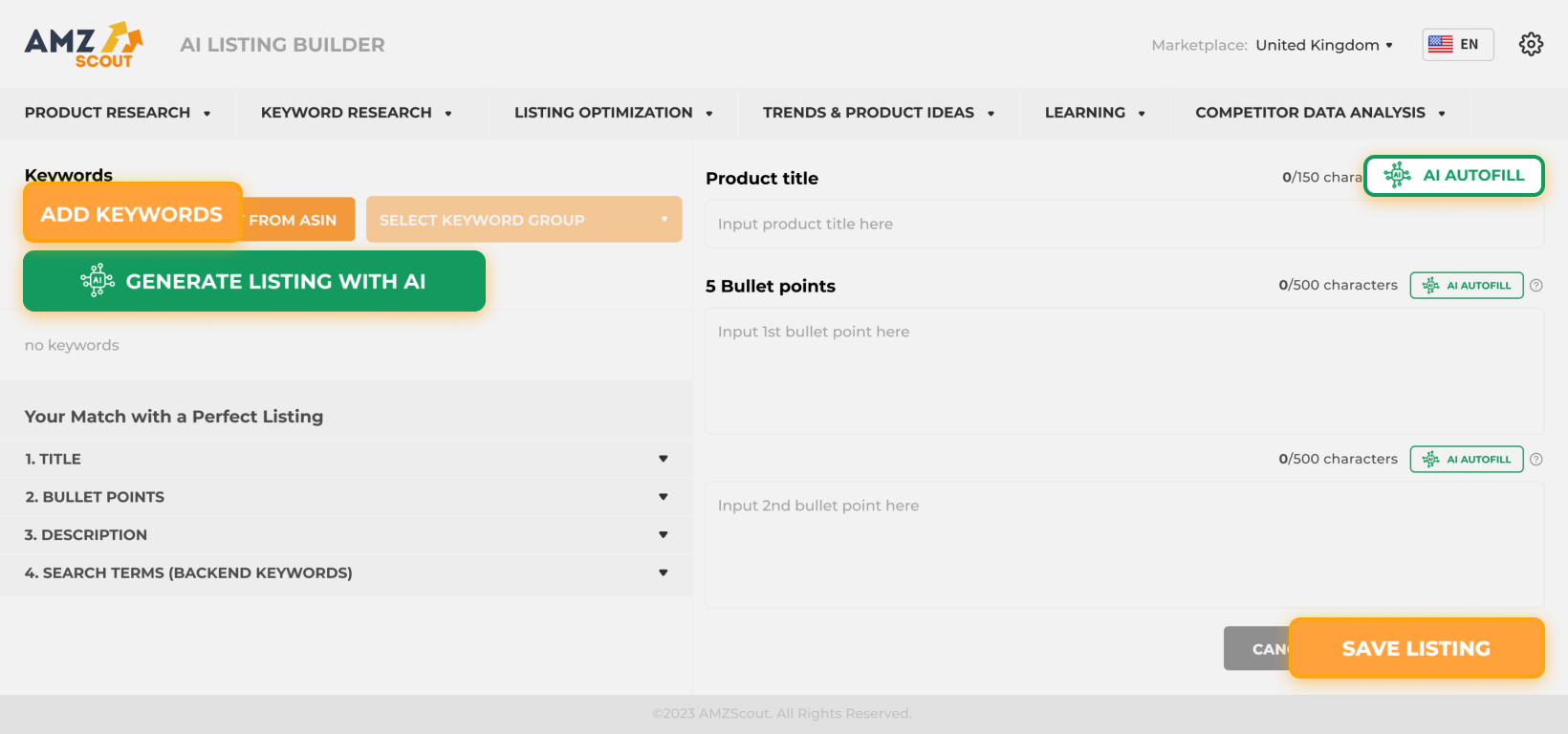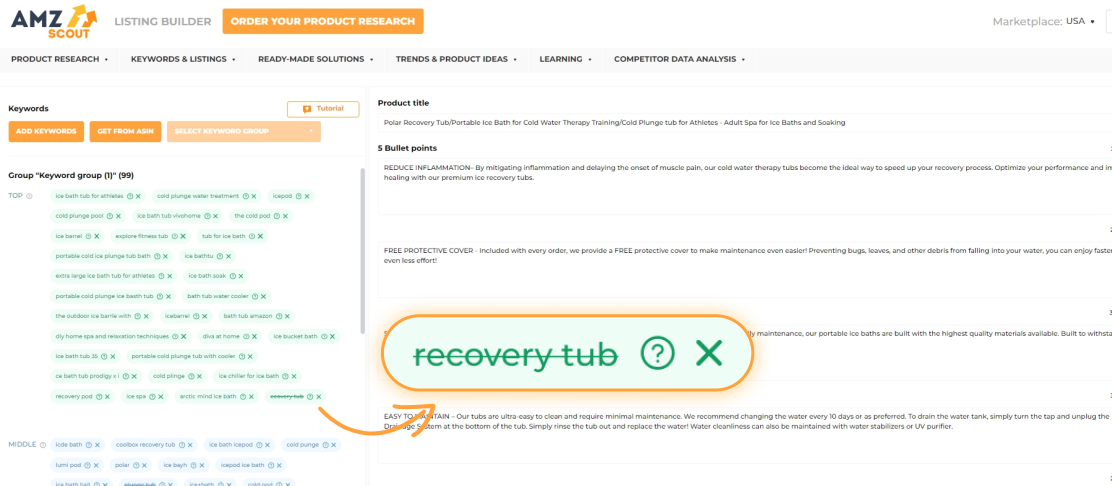
Understanding the Amazon A10 Algorithm and What It Means for Sellers
Success on Amazon isn’t just about having a great product, but rather about being seen. The Amazon A10 algorithm determines which products appear at the top of search results, making it essential for every seller to understand how it works. Constantly evolving, the algorithm evaluates relevance, sales performance, and customer behavior, shaping product visibility. Sellers who stay informed and adapt their strategies can maximize their reach and boost sales.
In this article, we’ll break down the A10 algorithm, explore its key ranking factors, and share practical strategies to help your products succeed in 2025 and beyond.
Table of contents
What Is the Amazon A10 Algorithm?
The Amazon A10 algorithm is the system that determines which products appear at the top of Amazon search results, directly influencing visibility, clicks, and sales.
Key points about the A10 algorithm:
Focus on relevance and quality: Unlike the Amazon A9 algorithm, A10 evaluates not just sales velocity and keywords, but overall product relevance, quality, and customer satisfaction.
Customer-centric ranking: Listings that generate genuine engagement, strong reviews, and consistent conversions are rewarded with higher visibility.
Improved product discovery: The algorithm ensures shoppers find relevant, high-quality products quickly, making searches like “wireless headphones” intuitive and efficient.
Seller opportunity and responsibility: High-performing, customer-focused listings are rewarded, while shortcuts and low-effort strategies are penalized.
Massive influence on sales: Around 63% of shoppers start their product search on Amazon; 70% never click past the first page, 35% click the first product, and the top three listings capture approximately 64% of all clicks.
Visibility equals revenue: Ranking high is critical not just for recognition, but for driving sales and sustaining long-term success.
What Factors Does A10 Take Into Account?
The Amazon A10 algorithm might seem mysterious, but at its core, it’s built around logic — rewarding trust, performance, and customer satisfaction. Unlike its predecessor, A9, which leaned heavily on sheer sales numbers, the A10 algorithm Amazon looks deeper. It studies who you are as a seller, how your products perform, and how shoppers interact with them over time.
Here’s a closer look at the key ranking factors that define success under the Amazon A10 algorithm update:
1. Seller Authority
Amazon favors sellers it can trust. Your feedback rating, account health, and fulfillment method all play a role. A solid reputation and using FBA (Fulfillment by Amazon) show reliability and enhance relevance in search results. Strong seller authority signals to Amazon that your business delivers quality and consistency.
2. Product Performance
High-performing listings rise faster. Metrics like click-through rate (CTR), conversion rate, and repeat purchases tell Amazon that your product satisfies customer intent. In this ranking algorithm, listings that attract clicks and convert well are rewarded with better visibility.
3. External Traffic
One of the biggest changes from A9 is the importance of off-Amazon traffic. When shoppers discover your product via Google, social media, or influencer campaigns, it can increase your ranking. The A10 values popularity across platforms, not just within Amazon’s walls.
4. Organic Sales and Long-Term Engagement
Quick spikes in sales don’t impress A10. Sustained organic sales, loyal buyers, and steady reviews do. The algorithm is explained simply: it rewards genuine engagement and lasting performance, not short-term gimmicks.
In short, the Amazon A10 algorithm is built to reward sellers who focus on real value, steady growth, and customer satisfaction. Those who adapt to these new priorities will see lasting success in Amazon’s ever-evolving marketplace.
How Does the A10 Algorithm Affect Amazon Sellers?
The Amazon A10 algorithm has quietly reshaped how success works on the platform. Sellers can no longer rely on quick fixes or heavy ad budgets to win visibility as the system now rewards genuine value and long-term performance.
Sustainable Growth Over Short-Term Gains
Under A9, sellers often poured money into ads to climb the search results quickly. But the Amazon A10 algorithm update changed that game. The new ranking algorithm places more weight on organic engagement and relevance, favoring listings that grow steadily through authentic sales, strong feedback, and consistent performance. In other words, Amazon now values sustainable growth over ad-fueled spikes.
Beyond PPC: Building Real Trust
Pay-per-click campaigns still matter, but they’re no longer enough on their own. Sellers who rely solely on PPC may see diminishing returns as A10 increasingly prioritizes genuine customer interaction. High ad spend without conversions or positive reviews can even hurt visibility. The takeaway: ads can help drive traffic, but trust and satisfaction keep your product ranked.
Customer Satisfaction Takes Center Stage
The A10 algorithm is designed to protect the shopper experience above all. That means factors like review quality, return rates, and listing accuracy have never been more important. Sellers who invest in high-quality images, clear descriptions, and responsive support are rewarded not just with sales, but with algorithmic visibility.
A Level Playing Field for Smaller Brands
Perhaps the most exciting change is how A10 gives smaller, customer-focused brands a real chance to compete. A niche seller with loyal fans, strong reviews, and steady repeat purchases can now rank alongside (or even above) massive competitors with deeper pockets. The algorithm rewards authenticity and engagement, not just ad dollars.
For example, a small skincare brand that consistently delights its customers, earns organic reviews, and drives repeat orders might now outperform a larger company running aggressive PPC campaigns but offering a less satisfying experience.
How Can Sellers Optimize for A10?
With the Amazon A10 algorithm prioritizing relevance, trust, and performance, optimizing your listings is no longer a one-time task, but an ongoing strategy. The new ranking algorithm rewards sellers who continually refine their content, visuals, and engagement tactics. Here’s how to stay ahead under the Amazon A10 algorithm update.
1. Optimize Listings with the Right Keywords
Success on Amazon starts with visibility, and mastering keyword research is essential to competing under the A10 algorithm. Here’s how to use AMZScout tools step by step, using stainless steel insulated water bottles as an example:
Start by using AMZScout’s Reverse ASIN Lookup to perform competitor keyword research:
Go to the AMZScout Reverse ASIN Lookup tool.
Enter your competitors’ ASINs. For example, search for a top-selling stainless steel water bottle and note its ASIN. You can input multiple ASINs to get a broader keyword view.
Click “Find Keywords” to see the search terms driving traffic to those listings, along with search volume, competition, and performance metrics.
Identify high-impact keywords that match your product and audience. For example: “insulated water bottle”, “leak-proof bottle”, or “BPA-free water bottle”.
Use the Create Keyword Group feature to add essential keywords from your Reverse ASIN Lookup results.
For a broader view, try the AMZScout Keyword Search tool, which quickly generates a list of top-performing keywords:
Open the AMZScout Keyword Search tool.
Enter a main product keyword - one of the high-performing keywords your competitors rank for, e.g., “insulated water bottle.”
Click “Find Keywords” to generate a larger list of related terms with search volume and average sales metrics.
Save the keyword list for use in your listing.
Once you’ve gathered your keyword list, use the AMZScout AI Listing Builder to craft titles, bullet points, and descriptions that are both compelling and keyword-rich:
Paste the saved keywords or add your organized keyword groups.
Click “AI Autofill” to generate optimized titles, bullet points, and product descriptions.
Review and refine the text to match your brand voice and appeal to your audience, ensuring your listing is both compelling and keyword-rich.
Following this process ensures that your listing is not just complete, but specifically optimized for Amazon’s A10 algorithm. By using real, high-performing keywords from competitors and verified search data, your title, bullet points, and description align with what shoppers are actually looking for. Listings created this way consistently outperform those generated solely with generic AI tools like ChatGPT, which may produce polished text but often miss the exact search terms customers use. In short, your listing becomes both algorithm-friendly and shopper-focused, driving higher relevance, better visibility, and more conversions.
2. Strengthen Product Images and A+ Content
Under the Amazon A10 algorithm update, presentation plays a major role in how customers engage with your listing - and engagement drives rankings. Use crisp, high-resolution images that showcase your product’s features and benefits. Add A+ Content that tells a story, answers common questions, and builds trust. When shoppers stay longer and scroll through your visuals, Amazon’s algorithm interprets it as higher relevance.
3. Drive External Traffic
The A10 gives weight to external traffic from Google, social media, and influencer campaigns. Promoting your listing through Instagram, TikTok, or niche blogs can significantly increase visibility and organic ranking. The more people who discover your brand outside Amazon, the stronger your on-platform authority becomes.
4. Focus on Account Health and Reviews
Healthy accounts perform better and A10 rewards them. Keep your return rates low, respond to customer inquiries quickly, and maintain strong seller metrics. To dig deeper into customer sentiment, try AMZScout’s AI Review Analyzer. Simply enter a product’s ASIN, and the tool generates a detailed summary of feedback, highlighting recurring themes, strengths, and weaknesses. It’s an easy way to identify what customers love and what you can improve to boost satisfaction.
Optimizing for the Amazon A10 algorithm isn’t about gaming the system; it’s about aligning with what Amazon values most: relevance, authenticity, and a great customer experience. Sellers who combine smart keyword strategy with strong content, external visibility, and account health will see their products rise naturally in search results – and stay there.
What Should Sellers Focus on in 2025 and Beyond?
The Amazon A10 algorithm isn’t just another ranking algorithm update. It’s a signal of where e-commerce is headed. In 2025 and beyond, winning on Amazon means thinking like a brand, not just a seller.
Build Long-Term Brand Value
Amazon is no longer a platform where quick wins and flash deals guarantee success. The algorithm rewards authenticity, consistency, and loyalty - qualities that strong brands naturally embody. Focus on creating a distinct identity that shoppers recognize and trust. That means cohesive visuals, clear messaging, and a product experience that lives up to every promise.
Diversify Traffic Sources
Overreliance on PPC is yesterday’s strategy. A10’s evolving ranking factors emphasize organic performance and external traffic. Build communities around your products - through social media, newsletters, and partnerships - to drive steady, diversified traffic. When customers seek you out directly, you’re no longer at the mercy of ad budgets or algorithmic shifts.
Prioritize Customer Trust and Repeat Purchases
The new Amazon A10 algorithm update rewards relationships, not transactions. Encourage reviews, respond to feedback, and deliver exceptional post-purchase service. Repeat buyers signal to Amazon that your product consistently satisfies, which is the ultimate marker of relevance and quality.
Treat A10 as an Opportunity
The Amazon A10 algorithm is more than a challenge; it’s a roadmap for sustainable growth. Sellers who embrace its focus on quality, trust, and customer experience will find themselves building stronger, more resilient businesses.
So instead of fighting the changes, lean into them. The A10 gives every seller, large or small, the same chance to prove value. And that’s not just an algorithmic advantage; it’s a long-term opportunity to thrive in the world’s most competitive marketplace.
Final Thoughts
The Amazon A10 algorithm marks a new era for sellers - one driven by authenticity, customer satisfaction, and sustainable growth. Success now depends less on ad spend and more on understanding what truly drives visibility and trust. With tools like AMZScout, sellers have the data, insights, and automation needed to adapt confidently, refine their strategies, and stay ahead of the ranking algorithm.
FAQs
What is the difference between Amazon A9 and A10 algorithm?
A9 focused on sales velocity and keyword relevance, while the Amazon A10 algorithm emphasizes external traffic, seller authority, and customer satisfaction.
How can I increase my ranking in Amazon search results with A10?
Use relevant keywords, optimize your listings with strong images and A+ Content, drive external traffic, and maintain excellent account health to increase visibility in search results.
Does Amazon A10 mean PPC ads are no longer effective?
No — PPC is still valuable, but under A10, it’s not enough on its own. Ads should be combined with organic strategies, external traffic, and brand-building.
What are the most important ranking factors in the Amazon A10 algorithm update?
Key ranking factors include seller authority, product performance (CTR and conversions), external traffic, and long-term customer trust.











